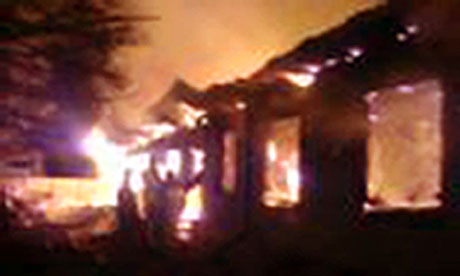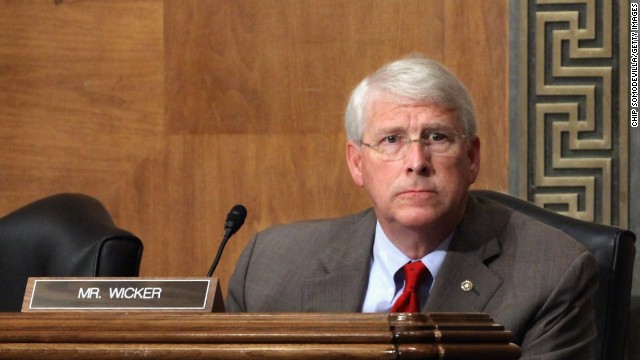The Muslim Brotherhood wants Spain back. Can the Christians have Egypt in exchange?
The Islamic Society of North America, an offshoot of the Muslim Brotherhood, has published an article that calls Andalusia – the hottest bit of Spain – a “paradise” that will return when “the only victor is Allah.” It reads like part travelogue and part religious tract, claiming that Andalusia was a region of tolerance “for 800 years” when occupied by Muslims, was then ruined by “the insanity following the Spanish reconquista” and, only today, has regained some of its former lustre thanks to growing interest in Islam in the region.
Quote: “In 2006, Spanish prime minister José Luis Rodríguez Zapatero said that Spain was indebted to Islam for its great historical contributions.” Mr Zapatero also legalised gay marriage, so it’s fair to presume that he’s not too keen for the Caliphate to come back.
The article actually makes some very good points. Islamic Andalusia was a cultural centre for western Europe, did tolerate the presence of Jews and Christians and did see a great many natives convert to Islam. Within Spain, that interpretation of history has become institutionalised as the country has tried to make peace with its Muslim minority and preach its own brand of multiculturalism. But it’s only half the story. According to the New York Times:
Nevertheless, there’s something both creepy and presumptuous about a Muslim writer visiting a Christian country and yearning for its “return” to the fold. Creepy because, for many Islamists (the author of this travelogue not included), that return will be by compulsion rather than evangelical outreach and church picnics: Hassan al-Banna, the founder of Egypt's Muslim Brotherhood, once wrote that "Andalusia, Sicily, the Balkans, south Italy, and the Roman sea islands were all Islamic lands that have to be restored to the homeland of Islam… it is our right to restore the Islamic Empire its glory." Such sentiments are also presumptuous because they imply that certain parts of the globe spiritually “belong” to people who “owned” them for a bit in the past. And if we’re really going to divide up the world by that logic, I’d like to make a counter offer to the Muslim Brotherhood.
Can we Christians have North Africa back? After all, it was once a centre of Christian civilisation – some of the earliest Christian communities were found there. You want brilliant theologians – Africa gave us St Augustine. You want devotion – Africa gave us the Desert Fathers. You want beauty – Africa gave us stunning iconography. You want learning – Africa gave us the libraries and schools at Alexandria. So Andalusia for Egypt seems a fair swap. After all, those pagan pyramids can surely be of no use to the Muslim Brotherhood.
Quote: “In 2006, Spanish prime minister José Luis Rodríguez Zapatero said that Spain was indebted to Islam for its great historical contributions.” Mr Zapatero also legalised gay marriage, so it’s fair to presume that he’s not too keen for the Caliphate to come back.
The article actually makes some very good points. Islamic Andalusia was a cultural centre for western Europe, did tolerate the presence of Jews and Christians and did see a great many natives convert to Islam. Within Spain, that interpretation of history has become institutionalised as the country has tried to make peace with its Muslim minority and preach its own brand of multiculturalism. But it’s only half the story. According to the New York Times:
Andalusian governance was … based on a religious tribal model. Christians and Jews, who shared Islam's Abrahamic past, had the status of dhimmis – alien minorities. They rose high but remained second-class citizens; one 11th-century legal text called them members of "the devil's party." They were subject to special taxes and, often, dress codes. Violence also erupted, including a massacre of thousands of Jews in Grenada in 1066 and the forced exile of many Christians in 1126.Of course, even this was arguably preferable to what followed the Spanish reconquista – an era characterised by violent mass pogroms against the Jewish population.
Nevertheless, there’s something both creepy and presumptuous about a Muslim writer visiting a Christian country and yearning for its “return” to the fold. Creepy because, for many Islamists (the author of this travelogue not included), that return will be by compulsion rather than evangelical outreach and church picnics: Hassan al-Banna, the founder of Egypt's Muslim Brotherhood, once wrote that "Andalusia, Sicily, the Balkans, south Italy, and the Roman sea islands were all Islamic lands that have to be restored to the homeland of Islam… it is our right to restore the Islamic Empire its glory." Such sentiments are also presumptuous because they imply that certain parts of the globe spiritually “belong” to people who “owned” them for a bit in the past. And if we’re really going to divide up the world by that logic, I’d like to make a counter offer to the Muslim Brotherhood.
Can we Christians have North Africa back? After all, it was once a centre of Christian civilisation – some of the earliest Christian communities were found there. You want brilliant theologians – Africa gave us St Augustine. You want devotion – Africa gave us the Desert Fathers. You want beauty – Africa gave us stunning iconography. You want learning – Africa gave us the libraries and schools at Alexandria. So Andalusia for Egypt seems a fair swap. After all, those pagan pyramids can surely be of no use to the Muslim Brotherhood.







 A decline in private sector output in April and falling car sales suggest the German economy is slowing again.
A decline in private sector output in April and falling car sales suggest the German economy is slowing again. 




